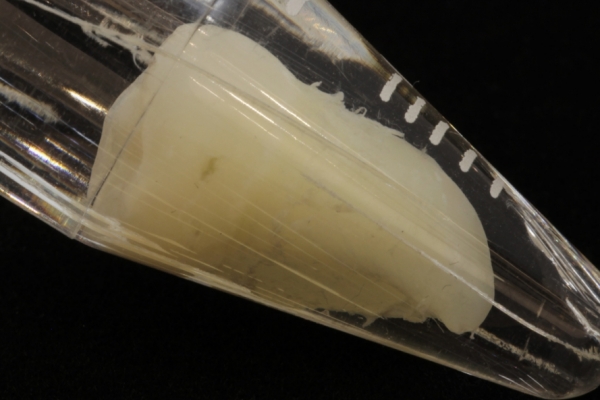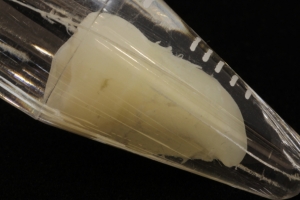
This sample is a molar tooth, removed by dental extraction. This is a process many of us will undergo in our lifetimes, partly because humans generally have too many teeth for the size of their jaws. Biological anthropologists attribute this oddity to encephalization: the evolutionary development of our very large brains relative to our body size. Over time, smaller jaws were selected for as a side-effect of this process, as they allowed the head of the foetus to still fit through the birth canal of an adult female.
Although they seem more like bones, teeth are in fact specialized, calcified, multi-layered structures formed by the skin. The innermost layer of the tooth is composed of a sensitive, living pulp that is supplied with nerves and blood-vessels. This is surrounded by dentine, a bone-like yellow substance that is the main component of ivory. Above the jaw line the dentine is covered by enamel - the hardest substance in the human body and the bit that we see when our teeth are still in our mouths.
On this sample you can see some of the component materials, including the dentine – the yellow, rougher looking material making up the root of the tooth, and the glossy, whiter layer of enamel on the crown of the tooth. If you look very closely, you can see some little bumps on the root, which are probably bits of cementum, the bone-like substance that attaches the tooth to all the ligaments.
Sample ID: 68
Add materials you find interesting to your own selections.
Use the  button to select a material and get started.
button to select a material and get started.

